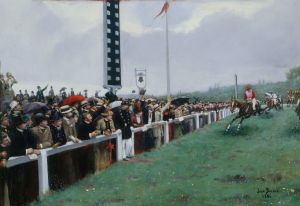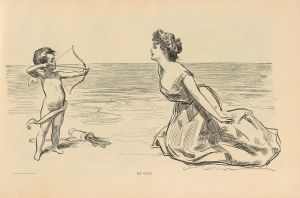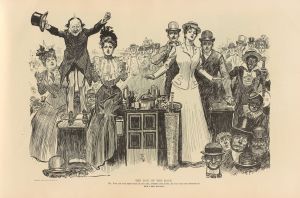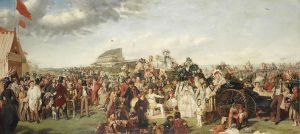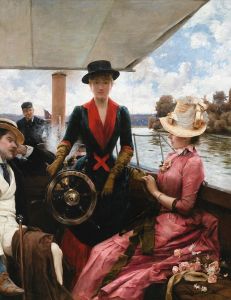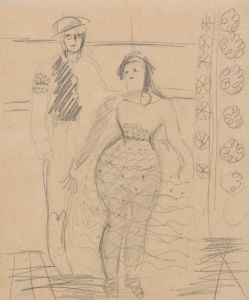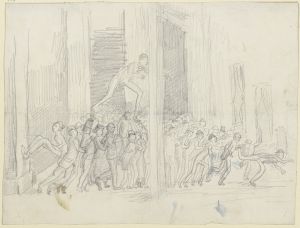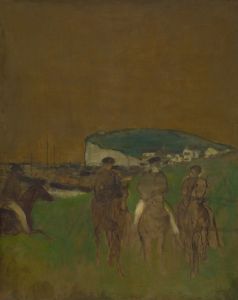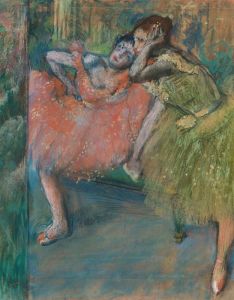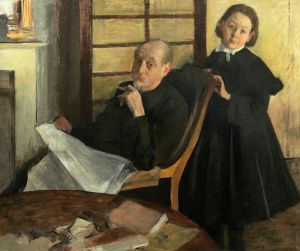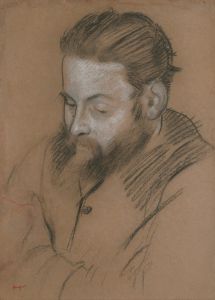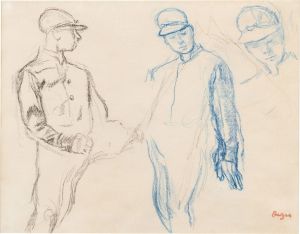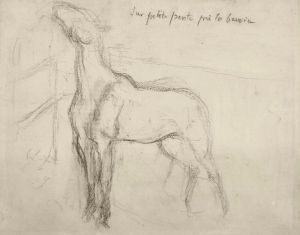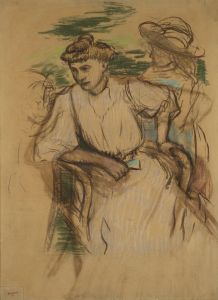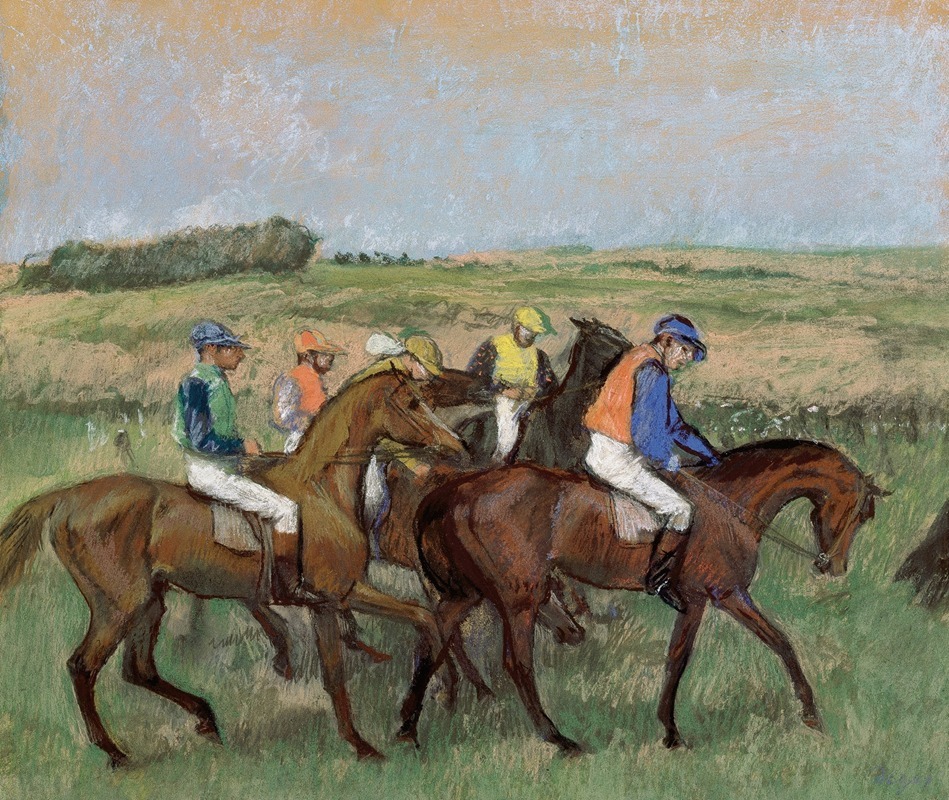
Races
A hand-painted replica of Edgar Degas’s masterpiece Races, meticulously crafted by professional artists to capture the true essence of the original. Each piece is created with museum-quality canvas and rare mineral pigments, carefully painted by experienced artists with delicate brushstrokes and rich, layered colors to perfectly recreate the texture of the original artwork. Unlike machine-printed reproductions, this hand-painted version brings the painting to life, infused with the artist’s emotions and skill in every stroke. Whether for personal collection or home decoration, it instantly elevates the artistic atmosphere of any space.
Edgar Degas, a prominent French artist associated with the Impressionist movement, is renowned for his works that capture the dynamism and grace of modern life in the late 19th century. Among his diverse subjects, horse racing was a recurring theme, reflecting his fascination with movement and the elegance of equestrian sports. One of his notable works in this genre is "Races," a painting that exemplifies his skill in depicting motion and atmosphere.
"Races" by Edgar Degas is a captivating piece that showcases his interest in the world of horse racing, a popular pastime in France during his lifetime. Degas was known for his keen observational skills and his ability to convey the energy and excitement of the racetrack. This painting, like many of his equestrian works, captures the moment just before the race begins or during the race itself, focusing on the tension and anticipation of both the horses and their jockeys.
Degas employed a variety of techniques to bring this scene to life. His use of color and light is particularly noteworthy, as he often experimented with unconventional compositions and perspectives. In "Races," Degas might have used a palette that includes earthy tones to depict the racetrack and vibrant colors for the jockeys' silks, creating a striking contrast that draws the viewer's eye to the central action of the painting. The brushwork is typically fluid and dynamic, capturing the sense of movement and the fleeting nature of the moment.
One of the defining characteristics of Degas's work is his ability to convey the physicality and grace of his subjects. In "Races," the horses are depicted with a sense of power and elegance, their muscles taut and ready for action. The jockeys, too, are portrayed with a sense of focus and determination, their bodies poised to guide their mounts to victory. This attention to detail and the ability to capture the essence of the sport are hallmarks of Degas's equestrian paintings.
Degas's interest in horse racing was not merely artistic; it also reflected his engagement with contemporary culture. During the late 19th century, horse racing was a fashionable and socially significant activity in France, attracting a diverse audience from different social strata. By choosing this subject, Degas was able to explore themes of modernity, movement, and the intersection of nature and human activity.
While "Races" is a testament to Degas's skill as a painter, it also highlights his innovative approach to composition and perspective. Unlike traditional equestrian art, which often focused on static portraits of horses and riders, Degas's work captures the fluidity and spontaneity of the race. His compositions often include unusual angles and cropped views, inviting the viewer to experience the scene as if they were part of the crowd at the racetrack.
In summary, "Races" by Edgar Degas is a masterful depiction of the excitement and elegance of horse racing. Through his innovative use of color, composition, and perspective, Degas captures the energy and movement of the racetrack, offering a glimpse into the vibrant world of 19th-century equestrian sports. His work remains a testament to his ability to blend observation with artistic expression, creating paintings that continue to resonate with audiences today.





